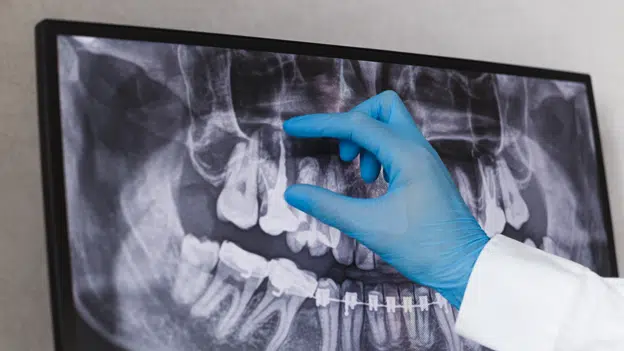
While some people may be aware of the discomfort associated with a root canal infection, there are other signs that may indicate an infection is present. Understanding the various signs of infection is important to ensure appropriate dental treatment is sought to prevent further tooth damage and deterioration.
What is a Root Canal Infection?
A root canal infection is a bacterial infection that develops inside the tooth due to decay or other damage. It affects the dental pulp, which contains blood vessels, nerves, and other connective tissues deep within the center of the tooth. When bacteria invade these areas, it causes inflammation and pain. If left untreated, an abscess can form at the base of the tooth root, leading to further spread of infection and destruction of the surrounding bone and tissue.
1. Persistent Tooth Pain
One of the most common indicators of tooth infection is an intense, persistent toothache. This pain may be sharp and throbbing in nature and will typically worsen with biting or eating. It may also radiate to other areas of the face, mouth, head, or jaw. The pain may increase at night or when warm or cold food items are consumed.
2. Tooth Sensitivity
Another common sign of a root canal infection is increased tooth sensitivity. This sensitivity may be experienced when consuming hot or cold foods and drinks, as well as when touching the affected area with the tongue. In some cases, even breathing in cold air can cause pain or discomfort. The affected tooth may also feel more sensitive than usual when brushing it or applying pressure to it.
3. A Discolored Tooth
Tooth discoloration may occur internally, meaning it is only visible when looking inside the mouth, or externally, which is visible to the naked eye. The teeth may also appear yellowish or gray and may seem mottled or streaked with brown or black lines.
4. Bad Breath
This is caused by bacteria and other microorganisms that are present in the infected area, releasing toxins and gases that can create an unpleasant smell. In some cases, this bad breath may linger even after brushing or using mouthwash. Additionally, it may be accompanied by a foul taste in the mouth.
5. Severe Tooth Decay
Deep dental decay can be identified by visible cavities and dark spots on the surface of the teeth. These spots may indicate that bacteria has reached deep within the enamel, causing decay to occur. There may be pits or holes in the affected area, as well as an overall yellowish color to the tooth.
6. Gum Swelling
This swelling may be accompanied by redness, tenderness, and intense pain when the affected area is touched. Additionally, it can cause the gums to be puffy or protrude outwards from the tooth. In some cases, pus-filled blisters may form around the affected area as a result of the infection.
7. Tooth Abscess
A tooth abscess is a pocket of pus that forms when bacteria and other microorganisms enter the affected area. This infection can cause severe pain, redness, swelling, and tenderness in the gums surrounding the infected tooth.
It is important to recognize these telltale signs early so you can seek out treatment as soon as possible; otherwise, oral health complications like tooth loss, and even bone loss, may result if left untreated for too long.
Common Treatment Options
Root canal infections can often be treated with endodontic therapy, which is a dental procedure that involves cleaning out the infected tissue and sealing the tooth. This helps to prevent further spread of infection and also prevents bacteria from re-entering the affected area. Endodontic therapy may include a root canal procedure, where an opening is created in the affected tooth to allow access to the infected tissue. Once the infection is cleared out, a crown or other restoration can be placed over the affected tooth to prevent further damage and restore its original appearance. In some cases, antibiotics may also be necessary to help treat the infection.
If root canal treatment is not successful, tooth extraction may be necessary in order to prevent further spread of infection. Additionally, it is important to practice good oral hygiene habits and regularly visit the dentist in order to catch any signs of infection early on.
Dangers of Untreated Root Canal Infections
The dangers of an untreated root canal infection can be severe. If left untreated, the infection may spread to other parts of the mouth and cause serious damage to surrounding teeth, gums, and bones. Additionally, the infection can travel to other parts of the body through the bloodstream causing systemic illnesses such as sepsis. This condition is potentially life-threatening and requires immediate medical attention.
Seek Emergency Treatment Today!
No matter what symptoms you may be experiencing, it’s important to get checked out by a healthcare professional if you suspect any type of dental issue like a root canal infection–the sooner it gets treated, the better!
At our dental practice, we are proud to offer complete endodontic care, including root canal therapy. Contact us today to set up a consultation and get the help you need!


